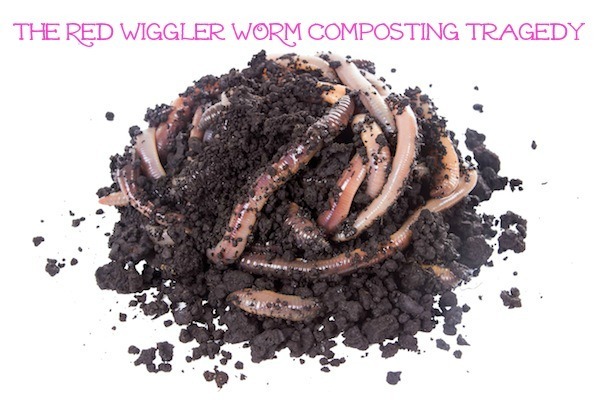The Ultimate Red Wiggler Composting Checklist for Successful Vermiculture
The Ultimate Red Wiggler Composting Checklist for Successful Vermiculture
Blog Article
Recognizing the Advantages of Red Wiggler Composting: Exactly How This Effective Method Transforms Organic Waste Into Nutrient-Rich Soil Modifications
Red Wiggler composting, utilizing the types Eisenia fetida, provides an engaging strategy to organic waste management, converting kitchen area scraps and lawn particles right into beneficial dirt modifications. This method not only enhances soil fertility but also addresses pressing environmental issues, including garbage dump waste reduction and greenhouse gas exhausts.
What Are Red Wigglers?
Red wigglers, medically called Eisenia fetida, are a types of earthworm that play an essential duty in vermicomposting systems. These worms are characterized by their reddish-brown shade, fractional bodies, and an unique ability to prosper in organic-rich atmospheres, making them suitable for composting applications - Red Wiggler Composting. Unlike their garden-dwelling equivalents, red wigglers like to inhabit the top layers of soil, where decomposing matter is abundant
Usually measuring between 3 to 4 inches in size, red wigglers have a high reproductive rate, enabling them to increase quickly under optimal problems. They have a distinct digestion system that allows them to refine organic waste efficiently, transforming it right into nutrient-rich spreadings, which are highly valuable for plant development.
Their tolerance to varying dampness levels and temperature varies even more enhances their energy in vermicomposting setups, making them a preferred selection among composting lovers. In addition, red wigglers are aerobic microorganisms, which requires a well-aerated composting setting, guaranteeing reliable decomposition. Comprehending the organic qualities and behaviors of red wigglers is necessary for optimizing their use in sustainable waste monitoring techniques.

Advantages of Vermicomposting
Utilizing the power of vermicomposting deals a multitude of environmental and farming advantages. To start with, it significantly decreases natural waste in land fills, therefore decreasing methane emissions, a potent greenhouse gas. By diverting food scraps and lawn waste to vermicomposting, we support a more sustainable waste administration system.
Furthermore, vermicomposting boosts dirt health. The castings produced by red wigglers are rich in vital nutrients, microorganisms, and enzymes, improving dirt framework and fertility. This nutrient-rich change advertises durable plant growth and enhances water retention, decreasing the need for chemical fertilizers.
Moreover, vermicomposting fosters biodiversity in the soil environment. The introduction of useful microorganisms from worm castings help in disease reductions and nutrient biking, creating a much healthier setting for plants.
Financially, vermicomposting reduces the costs connected with chemical inputs and garbage disposal. Garden enthusiasts and farmers can grow top notch produce at reduced costs, adding to food security and sustainability.
Just How to Beginning Composting
Beginning a composting venture can be a uncomplicated and satisfying process. This will certainly aid preserve a well balanced temperature, critical for the composting procedure.
Collect organic products such as cooking area scraps, lawn waste, and shredded paper. Go for a balanced mix of 'environment-friendly' materials, high in nitrogen (e.g., fruit scraps, coffee premises), and 'brown' products, rich in carbon (e.g., dried fallen leaves, cardboard) A ratio of approximately 2:1 environment-friendly to brown materials is perfect.
Beginning layering your materials, ensuring sufficient air blood circulation by transforming the pile consistently. This promotes cardiovascular decay, speeding and minimizing smells up the process. Screen wetness degrees; the compost ought to feel like a moist sponge but not excessively damp.
Nutrient Account of Vermicompost
Composting, especially with red wigglers, produces a nutrient-rich product understood as vermicompost. Additionally, it supplies micronutrients like visit site iron, magnesium, and calcium, cultivating durable plant advancement and improving soil health and wellness.
The microbial activity existing in vermicompost better enhances its profile, presenting helpful germs and fungi that advertise vitamins and mineral availability and uptake in plants. This organic element help in reducing plant diseases and improving dirt structure, leading to boosted water retention and aeration.

Ecological Impact of Composting
The ecological effect of composting, particularly with the usage of red wigglers, is complex and profound. This technique significantly minimizes the quantity of organic waste sent to land fills, which in turn minimizes greenhouse gas emissions, especially methane-- a powerful factor to climate modification. By drawing away organic products from land fills, red wiggler composting not only assists minimize environmental deterioration however additionally promotes sustainable waste administration techniques.

Furthermore, composting adds to carbon sequestration, as the process captures carbon dioxide from the atmosphere and stores it in the dirt. This all-natural procedure help in combating climate modification while enriching the soil - Red Wiggler Composting. Overall, red wiggler composting presents a sensible, environmentally friendly remedy for waste monitoring and ecological sustainability, promoting healthier ecosystems and a more lasting future
Final Thought
To conclude, Red Wiggler composting acts as an effective method for transforming organic waste into beneficial dirt changes. The process not just improves soil fertility and framework however likewise mitigates ecological problems connected with garbage disposal. By utilizing Eisenia fetida, this form of vermicomposting adds to improved biodiversity and sustains sustainable agricultural techniques. Inevitably, Red Wiggler composting plays a vital function find this in promoting much healthier communities and addressing the obstacles of climate adjustment.
Red Wiggler composting, using the types Eisenia fetida, offers a compelling strategy to organic waste monitoring, converting kitchen area scraps and backyard debris right into valuable soil modifications. Unlike their garden-dwelling counterparts, red wigglers like to inhabit the upper layers of from this source dirt, where decomposing matter is bountiful.
The castings created by red wigglers are abundant in essential nutrients, microorganisms, and enzymes, boosting soil structure and fertility. The nutrient-rich by-products of red wiggler task improve soil framework, rise water retention, and promote biodiversity within the soil environment.In verdict, Red Wiggler composting serves as an efficient technique for transforming organic waste into important dirt modifications.
Report this page